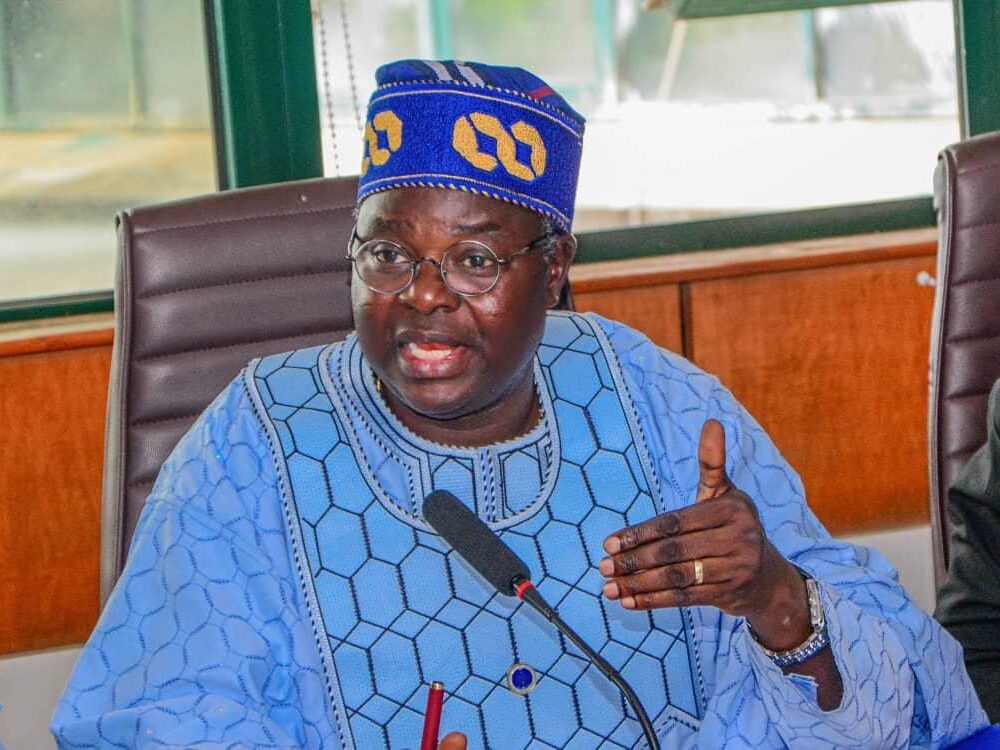The Nigerian press has been awash with concern about the terms of some loans contracted with or about to be contracted with China. The Minister of Transport, Rotimi Amaechi, even called on legislators to “look the other way” rather than conduct their due diligence on the loans, or else China will withdraw its support.
In this report, we try to tease out all the different strands of the debate.
What is the status of China loans to Nigeria?
Data obtained from the Debt Management Office (DMO)showed that between 2010 and March 31, 2020, 11 loan facilities have been obtained from the China Exim Bank.
The loans all have a seven-year grace period, 20 years tenor and were obtained at 2.5 per cent interest rate. They, however, have differing varying maturity dates.
The projects for which the loans were obtained include Nigerian National Public Security Communication system Project; Nigerian Railway Modernization Project (Idu- Kaduna section); Abuja Light Rail Project; Nigerian ICT Infrastructure Backbone Project; and the Nigerian Four Airport Terminal Expansion Project (Abuja, Kano, Lagos & Port Harcourt).
Others are the Zungeru Hydroelectric Power Project; 40 Parboiled Rice Processing Plants Project (Federal Ministry of Agriculture & Rural Development); Nigerian Railway Modernization Project (Lagos – Ibadan section); Nigeria Rehabilitation and Upgrading of Abuja – Keffi Makurdi Road; Nigeria Supply of Rolling Stocks and Depot Equipment for Abuja Light Rail Project; and the Nigeria Greater Abuja Water Supply Project.
Details revealed that the National Public Security Communication system Project of $399m and the Nigerian Railway Modernization Project (Idu- Kaduna section) of $500m were both obtained in December 2010 and are due to mature in September 2030. Funds for both projects have equally been fully disbursed at 100 per cent and Nigeria has an outstanding of $322m and $403m to pay upon the Security and Railway projects, respectively.
Loans for the Abuja Light Rail Project of $500m and the Nigerian ICT Infrastructure Backbone Project of $100m were obtained in November 2012 and January 2013 respectively. Both projects have also been fully disbursed at 100 per cent with an outstanding payment of $480m and $100m, respectively.
For the $500m Airport Terminal Expansion Project (Abuja, Kano, Lagos & Port Harcourt), the $984m Zungeru Hydroelectric Power Project, and the $325m Nigerian Parboiled Rice Processing Plants Project (Fed. Min. of Agric & Rural Dev), the maturity dates are 2034, 2033 and 2036, respectively.
The Nigerian Railway Modernization Project (Lagos – Ibadan section) was funded with $1, 267m, the Rehabilitation and Upgrading of Abuja – Keffi Makurdi Road with $460m, the Supply of Rolling Stocks and Depot Equipment for Abuja Light Rail Project $157m, and the Nigeria Greater Abuja Water Supply Project with $381m. All four loan facilities were obtained in August 2017 and May 2018, with maturity dates of September 2037 and March 2038.
As of March 2020, the Lagos Railway project has enjoyed 60 per cent disbursement rate while the Abuja-Keffi project has enjoyed a 17 per cent disbursement rate.
For the project on Supply of Rolling Stocks and Depot Equipment for Abuja Light Rail Project and the Nigeria Greater Abuja Water Supply Projects, no amount has been disbursed as of March 31, 2020, and no interest has been paid.
The country is now trying to obtain another loan from China to rehabilitate the Port Harcourt – Port Harcourt – Maiduguri Eastern Railway.
What does Nigeria’s law say?
According to Nigeria’s Fiscal Responsibility Act, (FRA) governments at all tiers shall borrow for only capital expenditure and human development at concessional terms (Section 41, 1(a)). By restricting new debt to concessional loans, the requirement guards against loans with expensive repayment terms, which could impoverish the country. Furthermore, Nigeria’s procurement laws require that projects of this magnitude undergo a competitive bidding process to ensure that the government gets value for money.
The practice on most new loans, not just the China loans, deviate from these requirements. Many planned loans taken in the recent past and some of the planned ones are not for capital or human development expenditure. Rather than offering grants or concessionary loans, China provides huge project-related loans at market-based rates, without transparency, much less environmental- or social impact assessments. Almost all the loans from China, including the one under controversy, are at commercial market rates, not concessional terms, which makes repayment terms very expensive.
Is China’s modus operandi a source of concern?
China is associated with lack of transparency in its dealings with governments, especially in the developing world. With its “debt-trap diplomacy”, China uses its financial muscle to achieve important strategic and global objectives. Financing projects abroad allows it to boost its exports of goods and services.
In exchange for financing and building the infrastructure that poorer countries need, China often demands favourable access to their natural assets, from mineral resources to land and seaports. Since the financing terms of the projects are often optimistic about the commercial viability of the projects, once in operation, many projects are unable to finance loan service from their revenue, putting countries in a debt trap, often paving the way for China to take over national assets and sovereignty.
What is China’s plan for Nigeria?
Not having seen the full loan documents, one is unable to comment fully on the nature of the agreements that cede Nigeria’s sovereignty to China ( as described in press reports). But there are several examples globally that could make this the intention:
The EXIM Bank of China-funded the construction of Hambantota port in Sri Lanka at commercial rates based on optimistic estimates of revenue from ocean-going vessels. Advances totalled $1.3 billion. Sure enough, Hambantota port was not making enough revenue to repay China when loan payments came due. In 2015, Sri Lanka, unable to pay the onerous debt to China it has accumulated formally handed over the port and more than 15,000 square feet of areas around it to China on a 99-year lease. China’s lease agreement over Hambantota included a promise that China would shave $1.1 billion off Sri Lanka’s debt.
The Mediterranean port of Piraeus was acquired from cash-strapped Greece by a Chinese firm for $436 million.
In 2015, a Chinese firm took out a 99-year lease on Australia’s deep-water port of Darwin – home to more than 1,000 US Marines – for $388 million.
Similarly, Djibouti was straddled with numerous infrastructure projects including a new port, two new airports and the Ethiopia-Djibouti railway, on a scale-out of variance with the size of the economy of the cash-strapped country. The country became trapped in a debt crisis and had no choice but to lease land to China for $20 million per year. China established its first overseas military base in the country, its first one overseas, just a few miles from a US naval base.
Several other countries, from Africa, Asia to Latin America, have been ensnared in a Chinese debt trap, forcing them to confront agonizing choices in order to stave off default. Kenya’s crushing debt to China now threatens to turn its busy port of Mombasa – the gateway to East Africa – into another Hambantota.
These experiences should serve as warning that China has strategic interest in its loans, not just commercial interests. Commercial terms could, therefore, be structured in such a way as to eventually achieve strategic goals. If Nigeria is caught in debt bondage to China, it risks losing both valuable natural assets and sovereignty. Minister of Transport Amaechi’s warning not to probe too much into China’s loan is proof that there really is a lot to worry about.
Where do we go from here?
It is true that Nigeria and many African countries have substantial infrastructure deficits and loans from China are helpful. However, given narrow revenue bases and undiversified economy, – which has been worsened by COVID-19 pandemic – can Nigeria realistically service more debt? This question cannot be answered without consideration of the terms of the loans and assessment of the trade-offs.
One also has to consider whether it is China’s fault that governments broker shoddy deals that do not benefit their people. Governments that are not accountable to their people will try to get away with anything, as long as people accept the status quo. Nigerians need to demand more accountability from their leaders otherwise the followers are as complicit.
In the government’s attempt to bridge the infrastructure deficit, it should be more circumspect in dealing with not only China but all lenders. It is important to be aware of exploitative dangers associated with debts whose terms and agreements are shrouded in secrecy, and not published. They should stand ready to protect the country’s interest.
No doubt China has more “financial firepower” to deploy than most other sources of financing, but in negotiations, the country should not be taken for a ride. Rather, China should be used to grow the economy beneficially. If this is done properly, Nigeria could avoid the fate that befell Sri Lanka and other countries.
The key to getting to that position is openness about contracts signed on behalf of the country and allowing public debate to bring out the best position. NGOs and the press should stand ready to demand for copies of not just the agreements with China, but all agreements signed by the country for a comprehensive review.
Premium Times




![Zainab Ahmed22 Nigeria's finance Minister, Zainab Ahmed [PHOTO: Pulse.ng]](https://i0.wp.com/media.premiumtimesng.com/wp-content/files/2020/04/Zainab-Ahmed22-e1596550179976.jpg?w=600&h=315&ssl=1)



